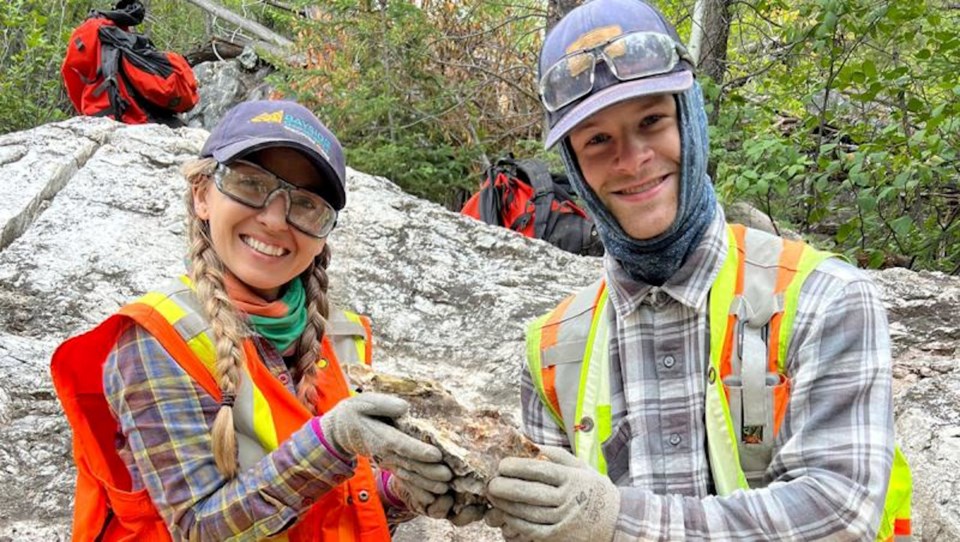A key economic study posted this week by Australia’s Green Technology Metals “validates” their potential to become a large-scale lithium player in northwestern Ontario and Canada.
With a proposed two-mine lithium operation valued at $1.2 billion in the works, the hunt is on to secure both private and government funding to make the mines and a Thunder Bay lithium refinery a reality.
Green Tech gave investors and stakeholders a better idea of what their mining and processing operations could look like with the release of a preliminary economic assessment (PEA), Dec. 7.
The company has two lithium deposits in the region. The most advanced is its flagship Seymour Project at the north end of Lake Nipigon, slated for production in late 2025, followed by its Root Project, northeast of Sioux Lookout, which could go into production by 2029.
Combined, the two mine projects contain a resource of 24.9 million tonnes of high-grade lithium-enriched spodumene rock at an average grade of 1.13 per cent of lithium oxide. From that resource, the company would annually produce 207,000 tonnes of spodumene concentrate for an initial 15-year period.
However, the company has much longer range hopes in mind as the lithium resources at both project sites are expected to grow in size as exploration continues.
Green Tech already has a customer in waiting. They’ve signed an offtake – supply – agreement earlier this year with South Korean battery maker LG Energy Solution to take 25 per cent of the concentrate produced from Seymour’s first five years of production.
While there’s plenty of construction underway in southern Ontario in building battery manufacturing plants for the electric vehicle industry, upstream there are no lithium mines and processing plants in operation to close the loop in a made-in-Ontario supply chain.
Green Tech aims to be the first.
The company wants to be a vertically integrated producer that mines lithium, creates the concentrate material at the mine, then feeds it into a Thunder Bay chemical refinery for conversion into a value-added product – lithium hydroxide – that’s shipped to the battery plants in the south. The tentative date to begin refining is mid-2028.
To advance the Seymour Project, Green Tech has started a more in-depth feasibility study, which will the basis to make a final decision to start preparatory work in 2024. That study should be out by the second quarter of next year.
Want to read more stories about business in the North? Subscribe to our newsletter.
To build the Seymour Mine and an on-site concentrator requires an upfront investment of $282 million.
Since there’s substantial North American demand for lithium, Green Tech said it’s had confidential discussions with “strategic groups” connected to the battery materials supply chain in Ontario about investing in Seymour.
There’s also government funding schemes available, on the federal and provincial levels to help with critical minerals development.
The cost to begin carving out the open pit will be $69 million as the project moves into development stage in mid-2025. Reaching full mining production could be achieved within six months by late 2025.
For the Thunder Bay lithium refinery, Green Tech’s preference is to find an experienced plant operator – someone who’s already making lithium hydroxide and other battery chemicals – and form a joint venture where Green Tech would take a minority ownership stake.
Discussions with potential partners are “at a concept level only at this stage,” the company said in its PEA report.
Financing the plant will be completed over a three-year period and, again, there’s opportunity to access government funding through programs like the Strategic Innovation Fund. News on that front will come out next year, the company said.
“We are pleased to deliver our PEA which initially includes the mines and concentrators in North Western Ontario, confirming a strong NPV (net present value) and robust project delivery strategy with low capital hurdles to get GT1 first into production within the province of Ontario,” said CEO Luke Cox in a statement.
“The success of GT1’s Strategy includes collaboration between Indigenous partners, communities, government, industry, and all stakeholders. Working together, the actions in this strategy will build a stronger, more resilient business and promote local communities."




